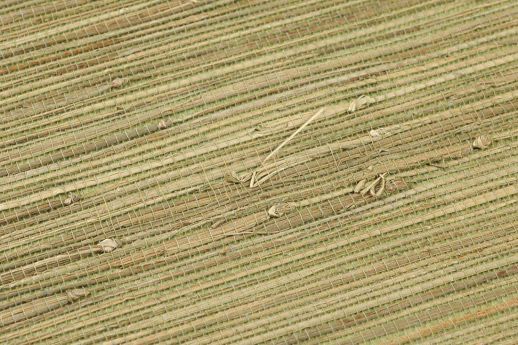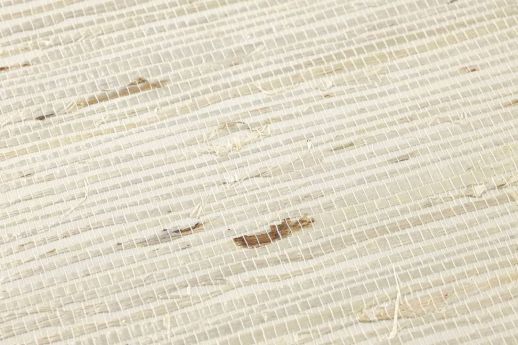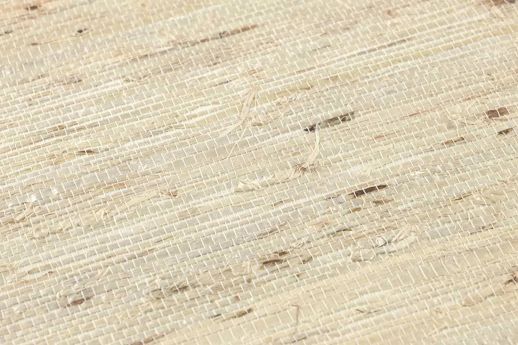Their natural, pure beauty combined with a gorgeous structure and many positive characteristics benefiting the room climate make grass wallpapers a timeless yet trendy interior design element. As far back as the 1970s and 1980s, natural wallpapers made with Asian grass types were incredibly popular, partly due to the incipient Green Movement and the associated desire for a lifestyle in harmony with nature and mindful of the environment.
And products that are both popular and of good quality tend to remain on the market. This is certainly true for design wallpapers with gorgeous grass surfaces known in the wall treatments industry as "grasscloth". This guide contains everything there is to know about these natural wallpapers which appeal to the senses and create an atmosphere of well-being. In addition, there are plenty of tips and tricks for interior design concepts involving grass wallpapers, along with information with regards to putting them up and caring for them.
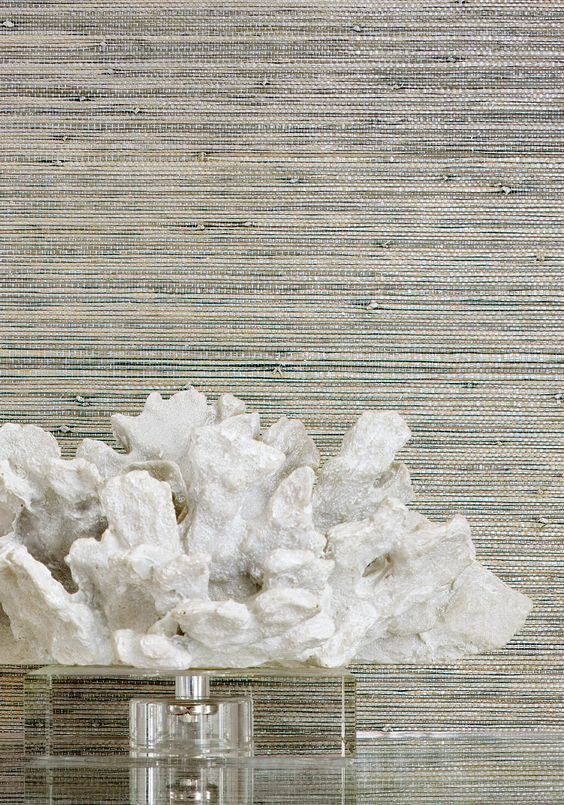
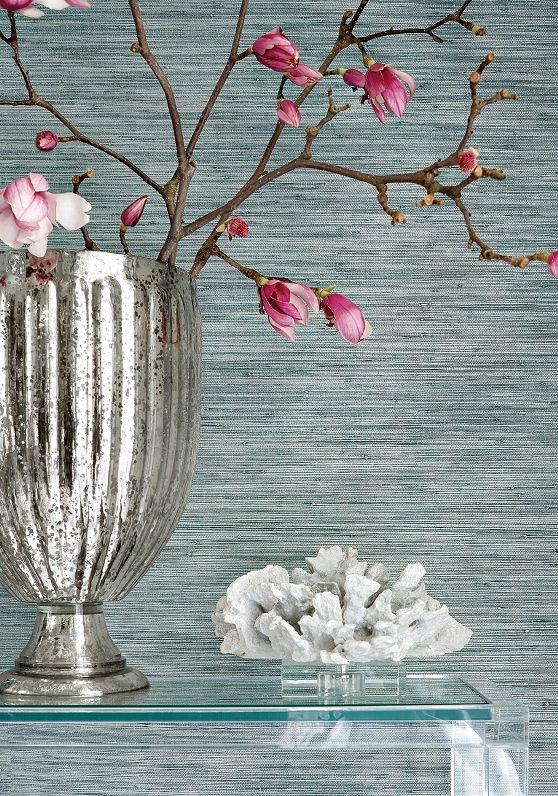
An all-time classic reclaims its rightful place in interior design
Back to the roots, the simple life, nature, all things spiritual. To say NO to out-of-control consumerism, the destruction of the environment, and the waste of natural resources - these are all valid concepts for the 21st century. However, they were also the most important pillars of the ecological movement of the 1970s and a significant aspect of the hippie lifestyle. Is it any wonder, then, that wall coverings during the Seventies and Eighties often involved natural materials? To live with and in nature, away from the stale air of a walled-in existence - these were important aspects for the younger generation. But by the 1990s, young people were leaning more towards high tech and futuristic technological visions. Those attractive grass wallpapers were painted over in garish colours. (Of course they can still be painted over and it can sometimes even enhance their natural structures). However, it would be a terrible shame to deprive unique nature wallpapers of their unique character.
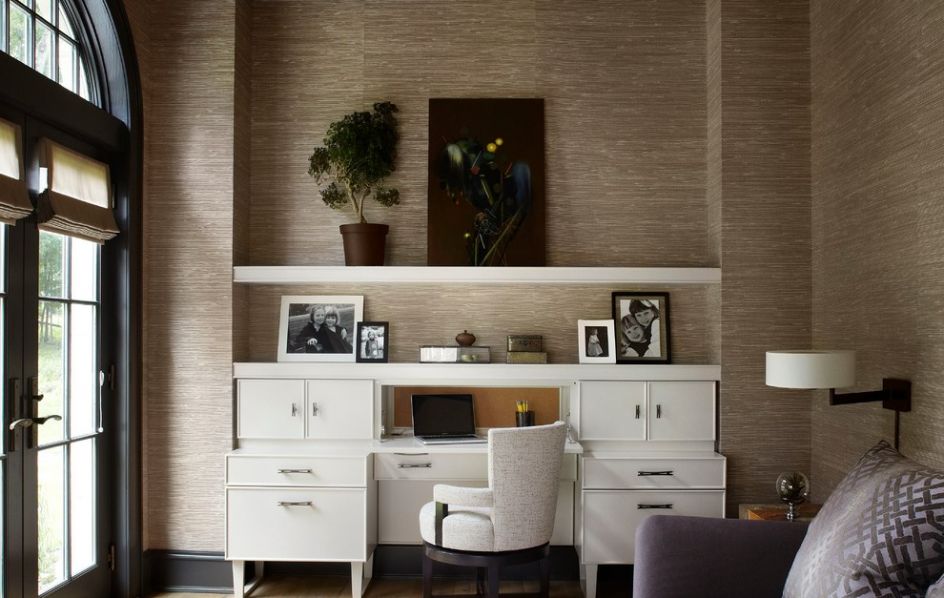
With a bit of luck, the odd hand-made original wallpaper from the 70s/80s can still be found on on-line auction platforms. Of course these are only usable if they were safely packed and stored in a cool, dry, dark place. Unfortunately, wallpapers that are more than 40 years old are unlikely to provide the necessary adhesive qualities or durability and low-pollutant requirements of the present.
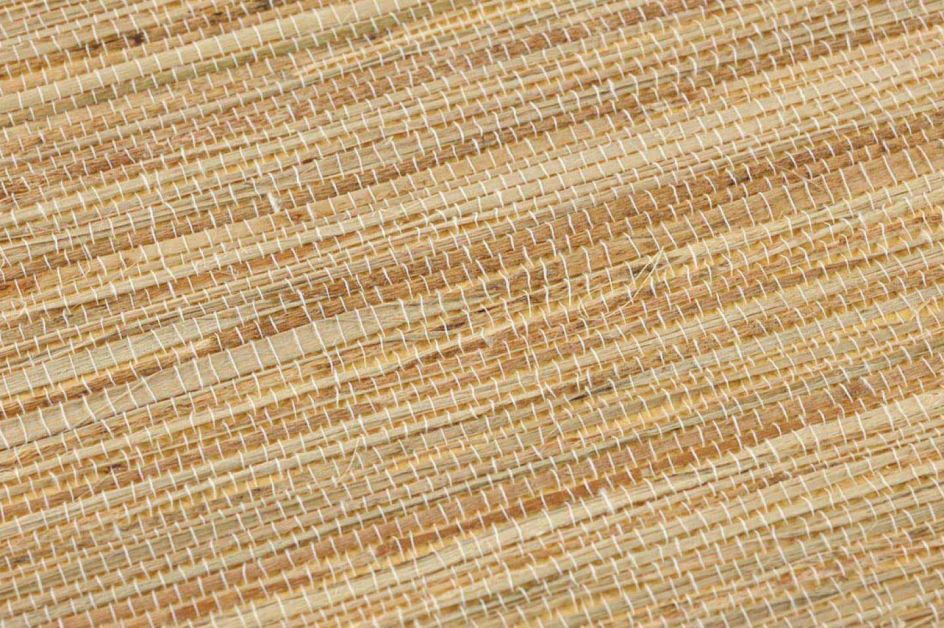
Today's sustainable and environmentally friendly nature wallpapers are available in a large variety of colours, yet they retain their natural qualities. Some of the newer models also boast gorgeous patterns created from natural elements, which provide additional structural interest. Every grass wallpaper is unique, and manufacturing generally involves manual processes.
The history of grass wallpapers: Chinese grass wallpapers
In wallpaper history, Chinese silk and grass wall décor plays an essential role. Asian wall coverings made from silk or grass are amongst the oldest wallpapers we know of. Around 107 - 220 AD, wall treatments were already made from elaborately embroidered silk in China. The grass wallpapers we know and love today also originated in ancient China. Compared to expensive silk wallpapers, they were much cheaper to produce, and they also provided fantastic heat insulation. It didn't take long until they became a very popular wall treatment all over Asia, and soon they reached European shores via maritime trade routes. Until the present day, not much has changed in terms of using Asian grasses or plant fibres like raffia, bamboo, hemp or loofah in natural wallpapers, and the same is true for the traditional manufacturing process.
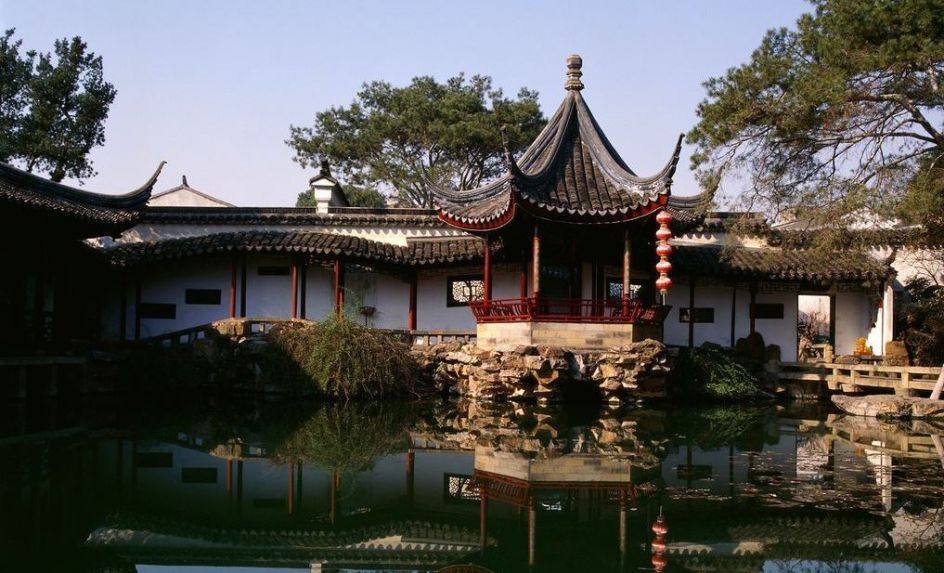
Materials and production of grass wallpapers
Dried Asian grass types as well as bamboo, raffia, hemp, jute, sisal or loofah (the same natural structure that sponges are made of) are all suitable basic materials for premium natural wallpapers. Bamboo is part of the family of grasses, whereas the other plants mentioned above belong to other species.
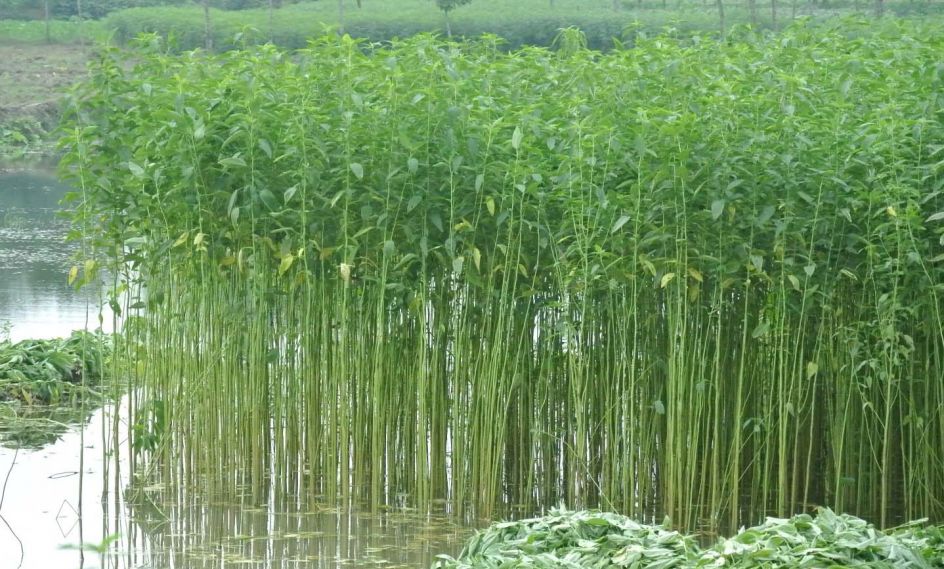
But for grass wallpapers, there is no actual demarcation line as such. Generally speaking, many dried plant fibres are suitable for manufacturing natural wallpapers. In the wall-coverings industry, bamboo wallpapers are often categorised as a separate class. These wallpapers are made exclusively of bamboo blades.
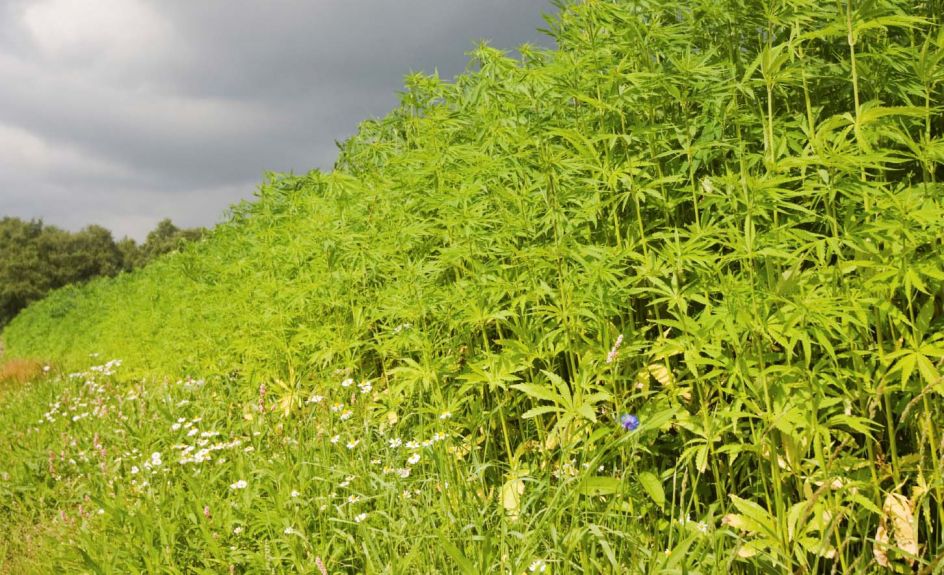
Grasses and plant fibres, e.g. the stalks or blades of arrowroot, are mainly sourced from Asia, which is where they have the best conditions to grow - some of them don't grow anywhere else in the world. Grasscloth wallpapers are also predominantly produced in Asia.

The traditional manufacturing process involves very skilled manual work. Grass and plant fibres are washed and dried (sometimes also bleached and dyed).
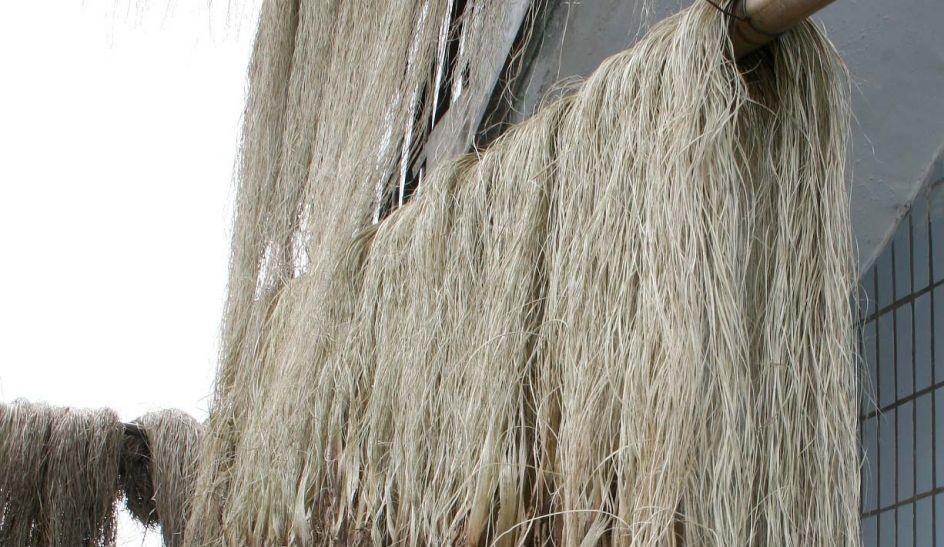


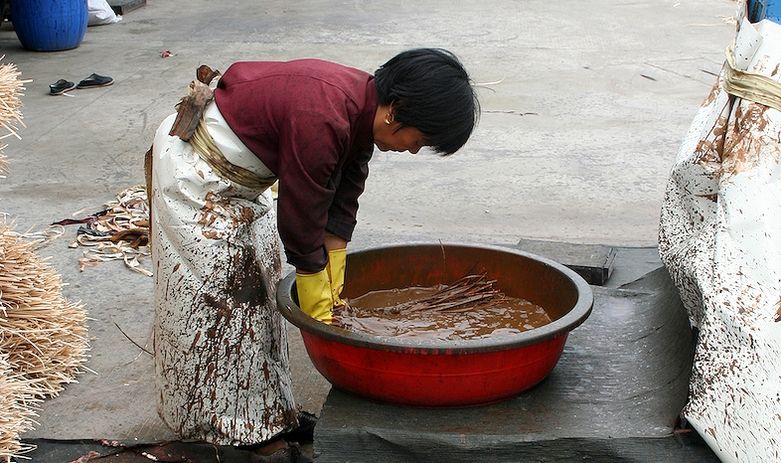
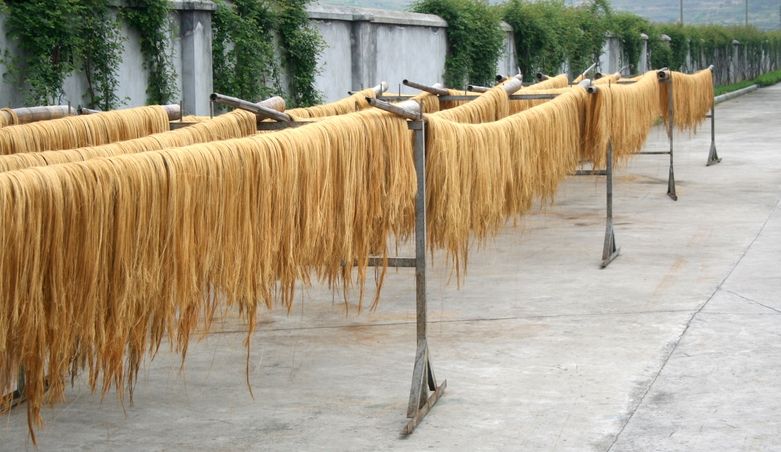
Individual blades or stems are then tied into long strands in order to create the main structure for the wallpaper surface. This "fabric" is then glued to a high-quality paper carrier, e.g. (based on traditional manufacturing ways) fine rice paper.
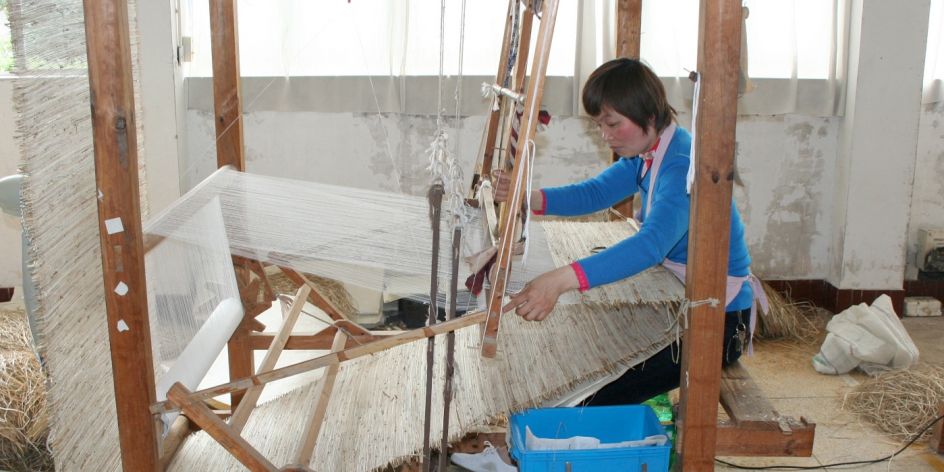
The knots where the grass blades were tied together are still visible after the weaving process and add to the popular irregular structure of nature wallpapers. Grass wallpapers come in a standard width of 0.91 m and are available per running meter or in rolls. Our Shop offers exclusive grasscloth wallpapers made with field and meadow grasses and bamboo grass fabrics.
So much more than just green - discover colourful wallpapers with grass surfaces
Nature wallpapers do not just differ in terms of whatever grass and plant fibres are used - the dried materials also come in a variety of natural colours. These hues of nature alone make grasscloth wallpapers incredibly versatile. Once dyed, they don't lose their natural character but gain many style attributes like sophisticated, elegant, cool, mysterious, deep, spiritual, refreshing or stimulating, to name but a few. However, you won't find very garish or artificial colourings in grass wallpapers. There is a large choice of natural hues, including some very strong ones, e.g. brown, beige, green, warm reds and oranges, yellows, as well as light and subtle whites and greys, e.g. ivory and pearl-white. A strong anthracite grey can add a modern twist to a grass wall-covering.
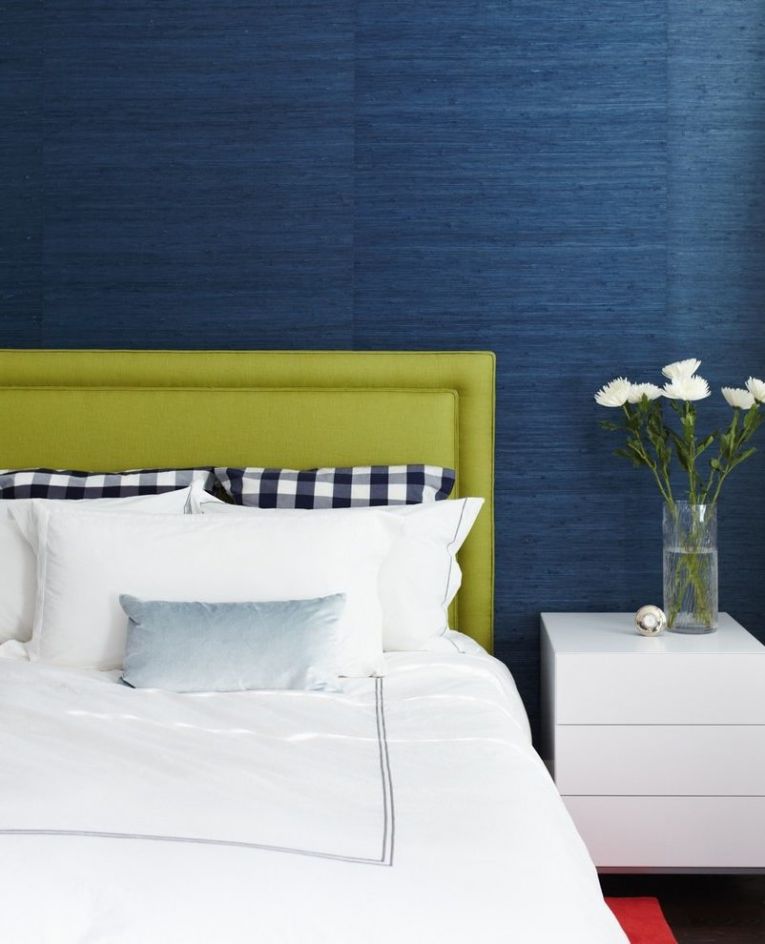
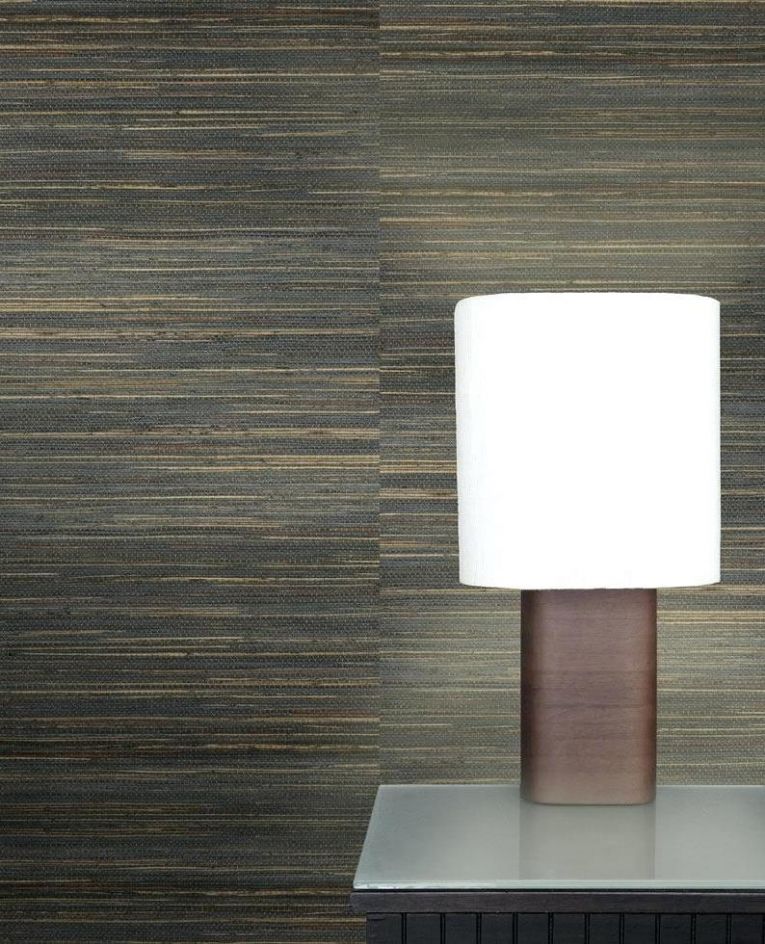
Pattern variations in grasscloth wallpapers
The structure of the material determines the pattern of grass wallpapers. Fans of nature wallpapers will find a huge array of models to choose from. Stripes, meshwork, irregular undulating lines, punctuated, rough or very delicate structures are just some examples that are the result of special weaving methods and the typical characteristics of respective plants. Combined with colour variations achieved by adding different grass or plant fibres, new structures are created and unfold their own special effect in a room.
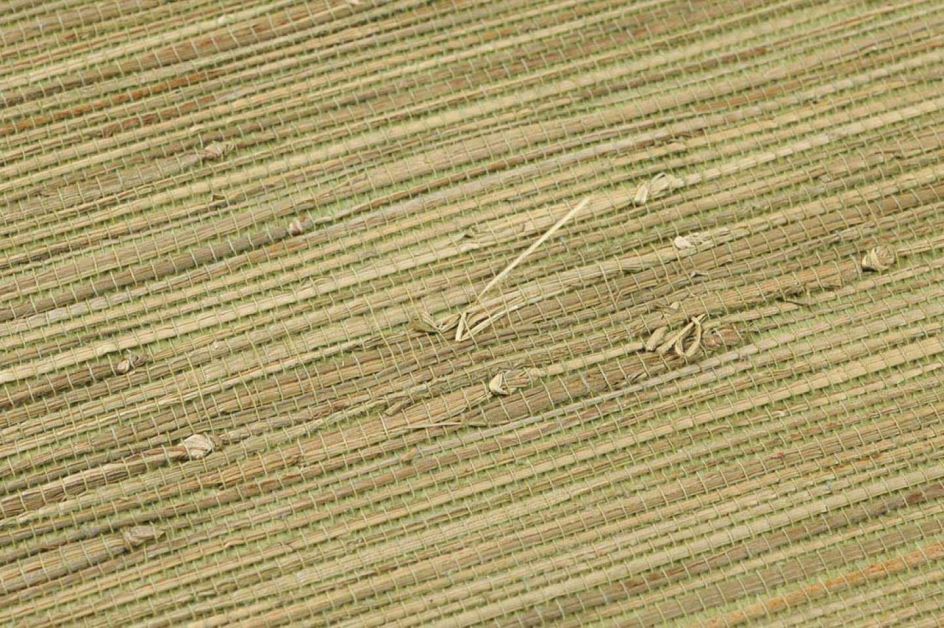
Grass wallpapers for natural comfort and well-being
The advantages presented by natural wallpapers, especially the grass variety, are beneficial for both a general sense of comfort and well-being and one's health. They have sound- and heat-insulation qualities, are breathable, they regulate humidity, are sustainable, durable and environmentally friendly. Grass wallpapers create an excellent room climate. They provide a calming and comforting ambience in private, commercial or public spaces alike. Modern design wallpapers with grass surfaces are suitable for a large array of interior design concepts and work for just about any taste and preference, from simple and cosy to sophisticated and elegant.

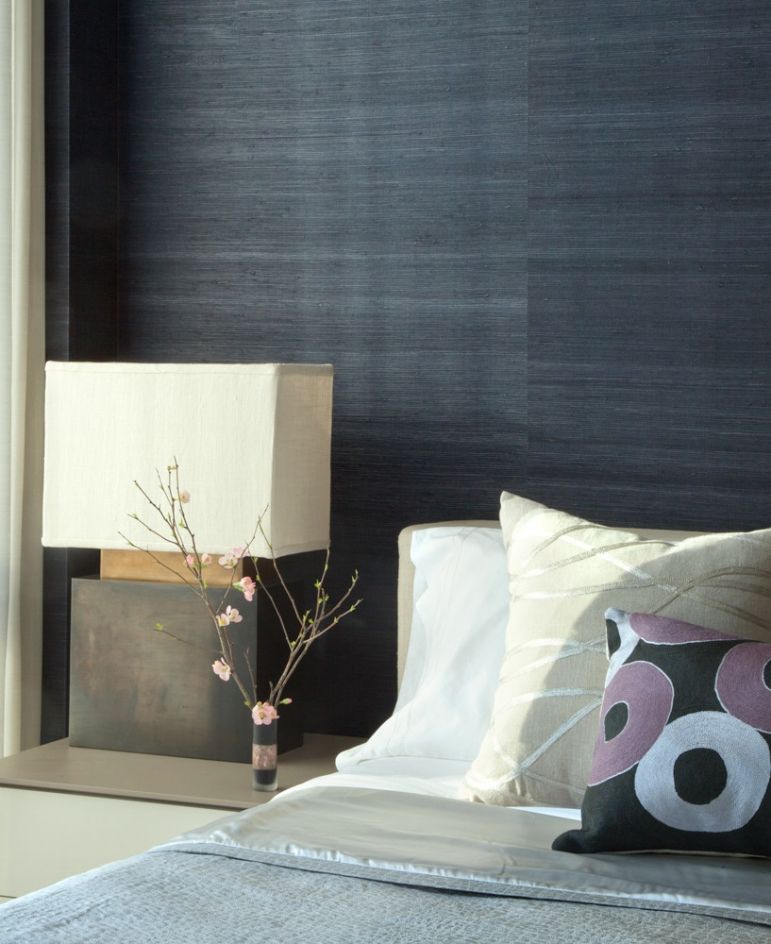
Tips for interior design ideas with grass wallpapers
Wallpapers with plant-based surfaces are not limited to just one style. Their versatility in terms of colours and patterns allows for a plethora of individual concepts. The only real limitation is that they are not particularly suitable for humid spaces like kitchens and bathrooms. The surfaces aren't usually sealed, so the delicate natural fibres can absorb water and swell.
In all other areas, it is entirely up to individual preferences whether a gorgeous grass wallpaper is used for just one feature wall or for the entire room. Furthermore, the delicate pattern structures do not have a major impact on the layout of a room (as opposed to, say, large-scale geometric patterns etc.). The only aspects to consider are the size of the room, and the amount and type of light. Here are some pointers: Darker grass wallpapers make the room appear smaller and more narrow, whilst light models seem to increase its size.
Less is more - natural wallpapers benefit from clear shapes and simplicity. This is why they are perfect for Asian-style furniture with their sought-after minimalistic purism. Retro revival styles like the Mid-Century Look or a modern take on the Country Look take full advantage of the beauty of grasscloth wallpaper.
Bright artificial colours are not the best fit for natural wallpaper materials; we recommend to choose subtle natural hues or neutral tones like black or white for furnishings and accessories. Various nuances of yellow bring additional life to wallpapers with natural grass elements and add a refreshing touch. Pastel colours work well, too, just as long as they match the basic tone of the grass wall décor.
Natural materials like wood, bamboo, stone or plants and flowers emphasise the unique character of grass wallpapers beautifully. Having said that, metal or plastic elements provide an interesting contrast if furniture and accessories are kept simple, modern or abstract.
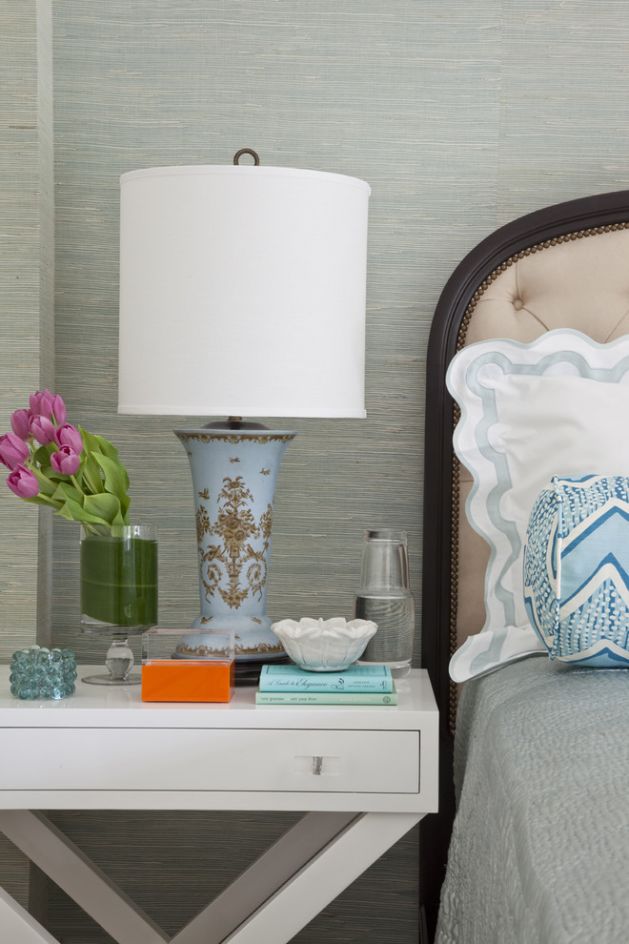
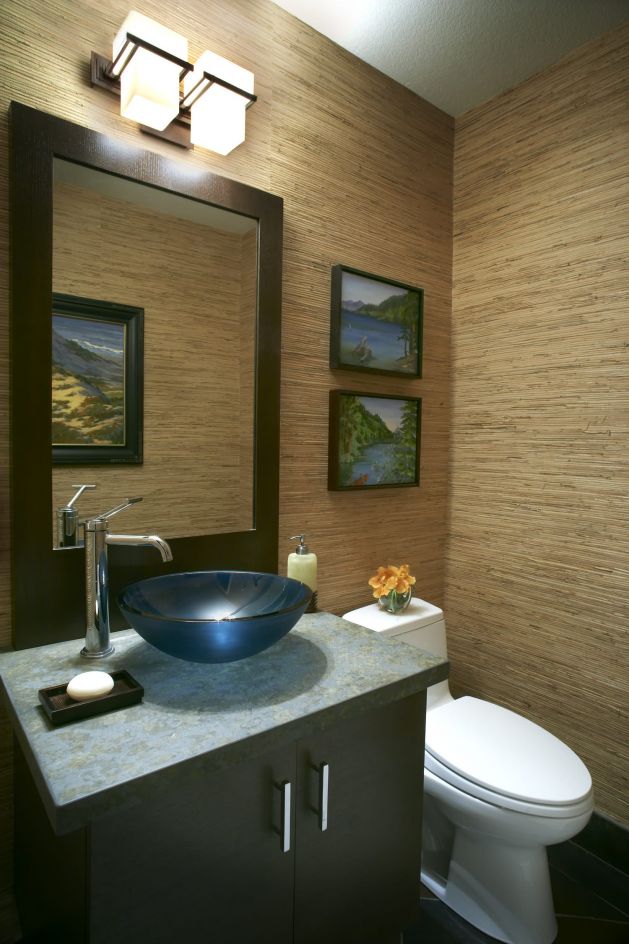
How to apply/hang grass wallpapers
In our Wallpaper Shop, you'll find premium-quality nature wallpapers per running meter (width: 0.91 m). Use our nifty wallpaper calculator to determine the amount of wallpaper you'll need for your specific requirements.
As grass wallpapers come with a paper carrier layer, wallpapering paste is applied to pre-measured and cut lengths and left to soak in for a specific time. Our detailed guide How to hang paper-based wallpaper explains each step.
In addition, please consult the guide How to prepare the wallpapering surface. Grasscloth wallpapers require smooth, even, dry surfaces to unfold their full effect. For very light-coloured grass wallpapers, we recommend applying a lining paper layer underneath the design wallpaper to deal with any potential colour variations in the surface. Some wallpapers might require a special adhesive - you will find all the relevant information in the insert that comes with your new wallpaper.
When cutting the lengths of wallpaper on the trestle table, always use a very sharp and precise cutting tool to prevent fraying or ripping the material. High-quality wallpapering scissors usually guarantee the best results. In areas where the wallpaper has to be cut to shape, for instance along skirting boards, around window and door frames, alcoves and corners, the best tools are triangular cutting edges, the cutting ruler or the cutter knife.
Grass wallpaper can be hung seamlessly. Try to avoid adhesive splodges and other stains, or remove them immediately by dabbing with a damp, lint-free cloth (do not rub or soak through the wallpaper). When smoothing out wall décor with natural elements, extra care should be taken to make sure that the delicate blades or stems are not pulled off the surface, or bent or damaged in any other way.
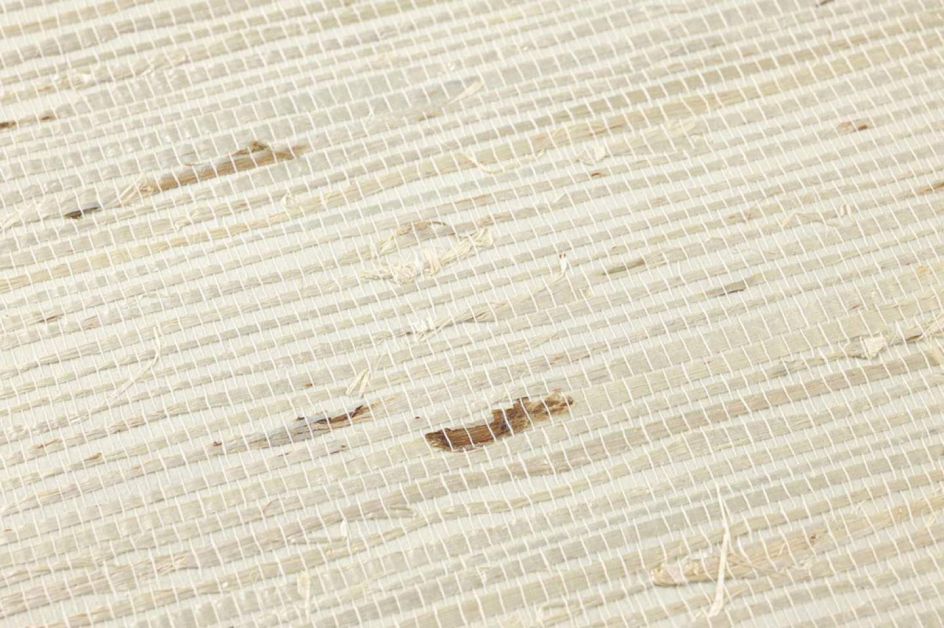
Cleaning grass wallpapers
Generally speaking, our fabulous nature design wallpapers are easy-care. They are fairly immune to dust particles, but can be cleaned with a soft duster or brush, should the need arise. The brush attachment of the vacuum cleaner should not be used as it is tricky to get the suction setting right. In addition, when placing the brush onto the wall, the inevitable pressure can damage the grass fibres.
Grasscloth wallpapers are water-resistant but not washable. This means that they can not be cleaned with water, and removing stains is a delicate process. If the stain is fresh, it should be removed with a clean paper towel and the area should then be dabbed very carefully with a damp cloth without rubbing or soaking the wallpaper.
Intermittent airing is good for grass wallpapers - like humans, these humidity-regulating and breathable wallpaper need fresh air. This will also get rid of loosely attached dust or dirt particles.
Too much and continuous air humidity damages the plant fibres and makes them swell. If the room is unheated or cold, the wallpaper might even develop mould. Always ensure a moderate minimum temperature and regularly control the air humidity with a hygrometer. Ideally, it should be between 40 and 60% with a room temperature of 16 and 22 degrees Celsius. Kitchens, bathrooms or basements often don't fall within these parameters, which is why they are not suited for grass wallpaper.


